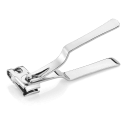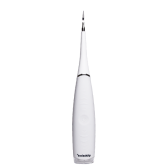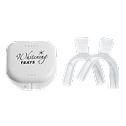Calluses are a common foot problem that many people, particularly older individuals, experience. They are thick, hardened layers of skin that develop as a response to repeated friction or pressure. While calluses are not usually a serious health concern, they can cause discomfort, pain, and increase the risk of infection if left untreated. Fortunately, there are many effective methods for removing calluses, including a Callus Remover and Foot File. In this article, we will discuss the best methods for removing calluses from the feet of men and women in their 50’s or older, with a focus on using a Callus Remover and Foot Scrubber as the preferred method.
What is a Callus and What Causes it?
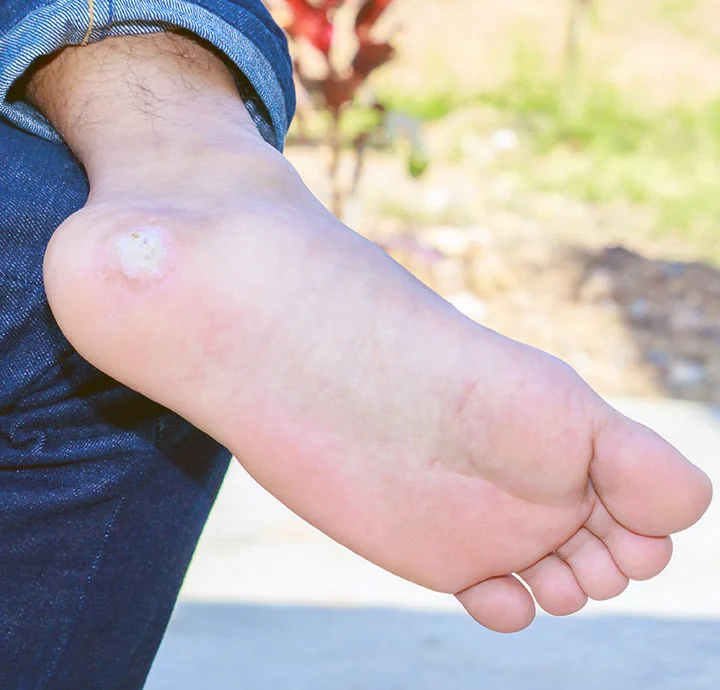
Calluses are typically caused by repeated friction or pressure on a specific area of the foot. They often form on the heel, ball of the foot, or sides of the big toe, but can occur anywhere on the foot. Some common causes of calluses include:
Ill-fitting shoes: Shoes that are too tight or do not fit properly can cause rubbing and pressure on the foot, leading to the formation of calluses.
High-impact activities: Activities that involve a lot of running, jumping, or other high-impact movements can put pressure on the feet, causing calluses to form.
Poor foot mechanics: Individuals with poor foot mechanics or abnormal gait patterns may be more prone to developing calluses due to uneven pressure on the feet.
Age: As we age, the skin on our feet naturally becomes thinner and less elastic, making us more prone to developing calluses.
Calluses are a natural defense mechanism of the body to protect the skin from further damage. While calluses are not usually a serious health concern, they can be uncomfortable and unsightly. It is important to address calluses early to prevent them from becoming larger and more painful. If left untreated, calluses can lead to other foot problems such as blisters, corns, or even infection. It is important to seek medical attention if you have diabetes or another medical condition that affects circulation, as you may be more susceptible to complications from calluses.
Negative Effects of Untreated Calluses
If left untreated, calluses can cause a range of negative effects that can impact an individual’s daily life. Some of the most common negative effects of untreated calluses include:
- Pain and discomfort: Calluses can become painful, particularly when standing or walking for long periods. This pain can make it difficult to perform daily activities, leading to a decrease in overall quality of life.
- Increased risk of infection: When calluses become too thick or cracked, they can create an entry point for bacteria, increasing the risk of infection. This is particularly concerning for individuals with diabetes or weakened immune systems, as they may be more susceptible to infections.
- Difficulty performing daily activities: Calluses can make it difficult to perform daily activities, particularly those that involve standing or walking for extended periods. This can lead to a decrease in overall mobility and independence.
- Formation of other foot problems: Calluses can cause other foot problems to develop, such as blisters, corns, or plantar fasciitis. These conditions can be painful and may require medical treatment.
Overall, it is important to address calluses early to prevent these negative effects from occurring. Using a foot scrubber or other effective callus removal methods can help individuals avoid pain, discomfort, and other issues associated with calluses
Benefits of Using a Callus Remover and Foot Scrubber
Using a Callus Remover like Swissklip Callus Remover has several benefits over other methods of callus removal. One of the main benefits is that it is a safe and effective way to remove calluses without causing pain or discomfort. The Swissklip Callus Remover is designed to remove calluses quickly and easily, without damaging the surrounding skin or causing bleeding. This is particularly important for older individuals who may have thinner, more delicate skin.
Another benefit of using a good Callus Remover and Foot Scrubber is that it is easy to use and maintain. Unlike other callus removal methods that require extensive training or special equipment, a Callus Remover and Foot Scrubber can be used by anyone, anywhere. Additionally, our Swissklip Callus Remover is made of surgical-grade stainless steel, making it durable and long-lasting.
Using a Callus Remover Foot Scrubber also allows individuals to remove calluses in the comfort of their own home, without the need for expensive trips to a podiatrist. This can be particularly beneficial for older individuals who may have difficulty with mobility or transportation.
Finally, a callus remover and foot scrubber is designed to be versatile, with a sharp side to remove tough calluses and a fine side for a more gentle, smoothing effect. This makes it an ideal tool for individuals with varying levels of callus severity and skin sensitivity.
Overall, a Callus Remover and foot scrubber like SwissKlip Callus Remover is a safe, effective, and convenient way to remove calluses from the feet of men and women in their 50’s or older. By using this tool, individuals can avoid pain and discomfort associated with other callus removal methods, while maintaining healthy and pain-free feet.
Step-by-Step Guide to Removing Calluses with a Callus Remover and Foot Scrubber
1. Choosing the Right Tools for Callus Removal

When it comes to callus removal, selecting the right tools is crucial for ensuring effective treatment and maintaining overall foot health. Some popular options include:
- Foot File: A file with a coarse surface, designed specifically for removing thickened skin on the feet. Among the various options available, the foot file stands out as the best choice for several reasons.
- Safety and Precision
- Cost-Effectiveness
- Convenience and Ease of Use
- Versatility
- Environmentally Friendly
- Callus Shaver: A specialized tool with a sharp blade to carefully shave off layers of callused skin.
- Callus Removal Creams: Creams containing active ingredients such as salicylic acid, urea, or lactic acid to help break down and dissolve calluses.
- Pumice Stone: A natural, porous stone that works well for gently exfoliating callused skin.
2. Preparation: Setting the Stage for Success

Begin your at-home callus removal process by soaking your feet in warm water. Adding Epsom salt or a few drops of essential oils, such as lavender or eucalyptus, can enhance the foot soak experience can help soften the callused skin, making it easier to remove. Soaking your feet in warm water for 15 to 20 minutes is an essential step in the callus removal process. Ensure the water is comfortably warm but not scalding, as hot water can cause burns or irritation.
3. Exfoliating with a Foot File: The Best Option for Callus Removal at Home
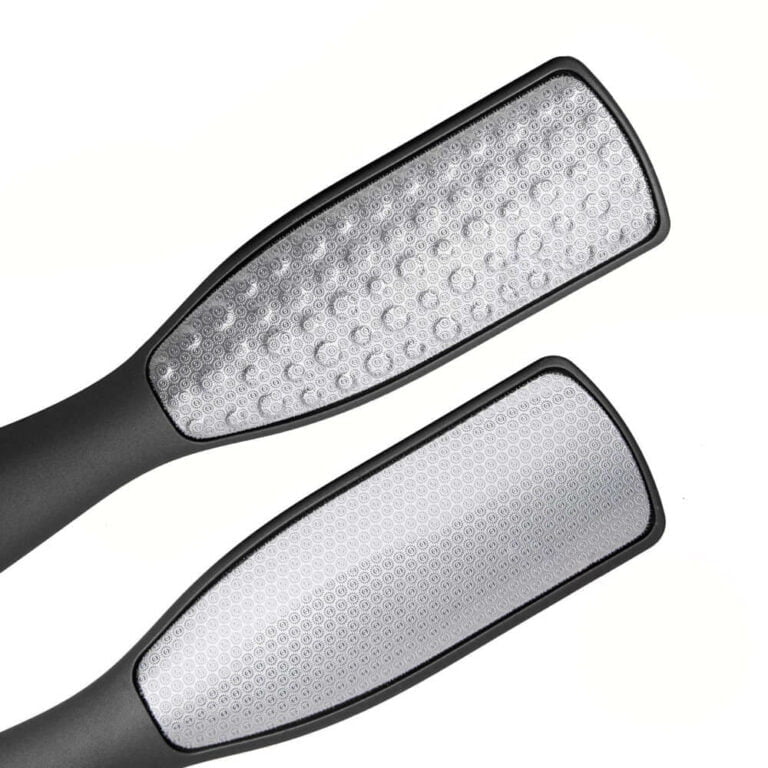
To remove calluses effectively, use a high-quality foot file callus remover designed for callus removal. Foot files offer a safe and controlled method for reducing thickened skin on your feet.
Choosing the foot file as your primary tool for callus removal at home is an excellent decision, as it provides a safe and effective method for addressing thickened skin on your feet.
Our Swissklip Callus Remover stands out as a highly recommended option, boasting numerous positive customer reviews and exceptional product features.
The Swissklip Callus Remover is designed with user comfort and effectiveness in mind.
Begin by gently filing the callused areas using the coarse side of the foot file, applying light pressure in a back-and-forth motion. Periodically rinse your feet and the foot file to remove dead skin and assess your progress.
Switch to the fine side of the file to smooth the skin and create a polished appearance. Rinse your feet once more to remove any remaining debris.
4. Using Callus Removal Creams

Callus removal creams can be a useful addition to your home callus removal regimen. Choose a cream containing active ingredients such as salicylic acid, urea, or lactic acid, and follow the manufacturer’s instructions for application. Be aware that some creams may cause irritation, so it’s important to perform
5. Applying a Moisturizing Foot Cream
Following the exfoliation and callus removal process, it is essential to moisturize your feet. This helps to soothe and replenish the skin, promoting overall foot health. Choose a thick, hydrating foot cream containing ingredients such as shea butter, glycerin, or urea. Massage the cream into your feet, paying particular attention to the previously callused areas and any dry spots.
For added protection, you can wear cotton socks overnight to lock in moisture and help your feet recover.
6. Maintaining Your Feet with Regular Care
Regular foot care is essential for preventing callus recurrence and ensuring overall foot health. Incorporate the following habits into your routine:
- Inspect your feet daily for signs of callus formation, irritation, or injury.
- Wash your feet with mild soap and water, and dry them thoroughly, paying attention to the areas between your toes.
- Moisturize your feet daily with a high-quality foot cream.
- Trim your toenails regularly, cutting them straight across to prevent ingrown nails.
- Exfoliate your feet weekly or as needed, using a pumice stone or foot file to gently remove dead skin cells.
Tips for Preventing Calluses from Developing in the Future

- Inspect your feet daily for signs of callus formation, irritation, or injury.
- Wash your feet with mild soap and water, and dry them thoroughly, paying attention to the areas between your toes.
- Moisturize your feet daily with a high-quality foot cream.
- Trim your toenails regularly, cutting them straight across to prevent ingrown nails.
- Use a pumice stone, foot scrubber or foot file to gently remove dead skin cells and prevent the build-up of dead skin.
- Wear comfortable shoes that fit properly and provide adequate support.
- Avoid wearing shoes with high heels or pointy toes, which can put pressure on the feet and toes.
- Use shoe inserts or insoles to help distribute pressure more evenly across the foot.
Importance of Proper Foot Care

Wearing the right footwear plays a significant role in preventing callus formation and recurrence. Proper foot care is essential for maintaining healthy feet and preventing foot problems like calluses, corns, and other issues. Opt for shoes that fit well and provide adequate support, cushioning, and breathability. Avoid high heels, tight shoes, or footwear that causes excessive pressure or friction on specific areas of your feet. In some cases, custom orthotics may be beneficial for correcting imbalances and reducing callus development.
There are a few other things you can do to maintain healthy feet. These include:
- Keeping your feet clean and dry: Wash your feet daily with warm water and soap and make sure to dry them thoroughly, especially between the toes.
- Trimming your toenails properly: Trim your toenails straight across and avoid cutting them too short or rounding the edges.
- Checking your feet regularly: Regularly inspect your feet for any signs of damage, such as cuts, blisters, or sores.
- Seeking medical attention for any foot problems: If you notice any signs of infection or foot problems that don’t improve with at-home care, seek medical attention from a podiatrist or other medical professional.
Best Types of Footwear to Prevent Calluses

Choosing the right footwear is crucial for preventing calluses from developing. Shoes that are too tight or do not provide adequate support can cause friction and pressure on the feet, leading to the formation of calluses. Some of the best types of footwear to prevent calluses include:
- Comfortable shoes that fit properly and provide adequate support
- Shoes with cushioned soles that absorb shock
- Shoes with wide toe boxes that allow the toes to spread out naturally
- Shoes made from breathable materials that allow the feet to stay dry and cool
When to Seek Professional Help

While many calluses can be safely and effectively treated at home, there are instances where professional help may be necessary. Consult a podiatrist or foot care specialist if you experience any of the following:
- Severe pain or discomfort associated with calluses.
- Infection signs, such as redness, warmth, swelling, or discharge.
- Underlying health conditions, such as diabetes or poor circulation, which can increase the risk of complications from callus removal.
- Persistent or recurring calluses despite at-home treatments and preventative measures.
A qualified professional can evaluate your specific foot concerns, provide tailored treatment options, and offer guidance on maintaining healthy feet in the long term.
Conclusion
In conclusion, calluses are a common foot problem that can cause discomfort, pain, and increase the risk of infection if left untreated. Fortunately, there are many effective methods for removing calluses. By following the step-by-step guide and tips mentioned above, you can safely and easily remove calluses and prevent them from developing in the future. Remember to prioritize proper foot care and choose the right footwear to keep your feet healthy and pain-free.













